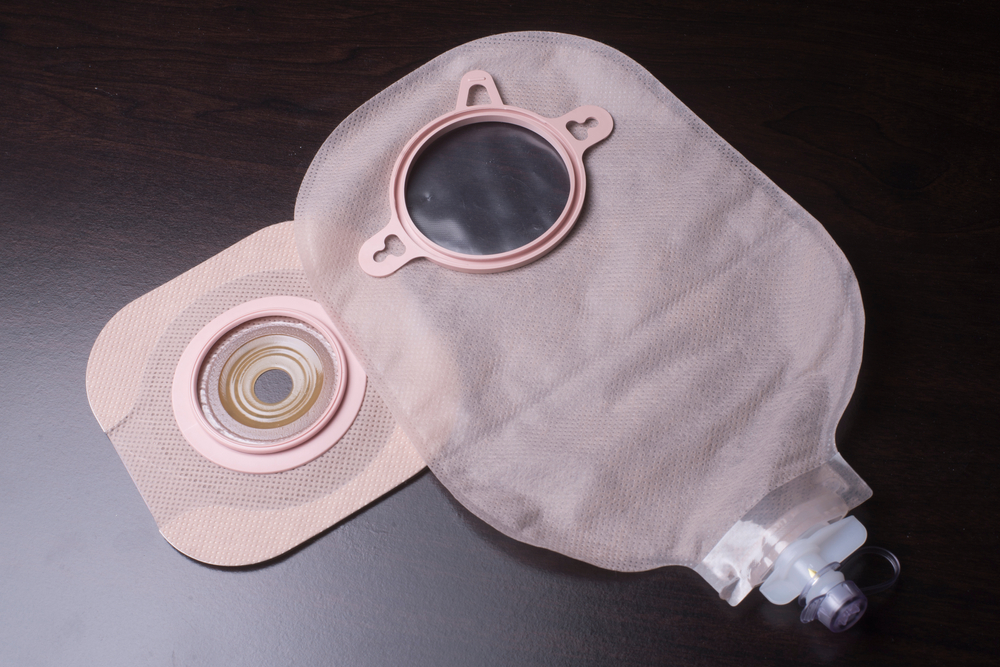By Robin Glover
Ostomy surgery is a life-changing event. As ostomates, we go through things other people will never have to experience. Everybody’s story is different, but we have all shared in many similar aspects of our journeys. We are a unique community of strong and courageous people of all ages and backgrounds.
To celebrate that, United Ostomy Associations of America is hosting the UOAA 2022 Virtual Ostomy Symposium on Saturday, August 13, 2022 from 10:30 a.m. to 5:30 p.m. Eastern Time (7:30 a.m. to 2:30 p.m. Pacific) including breaks.
This symposium will feature a mix of ostomates, j-pouchers, and medical professionals delivering a fun, engaging, and informative day of learning, laughing, and community-building.
Questions you were too afraid to ask will be answered. Questions you didn’t even know you had will be answered.
In all, 22 speakers will be bringing their expertise on a variety of ostomy-related subjects. (And don’t worry, each session will be recorded so if you can’t make it live that day or can’t see all of the ones you want, you’ll be able to watch them later.)
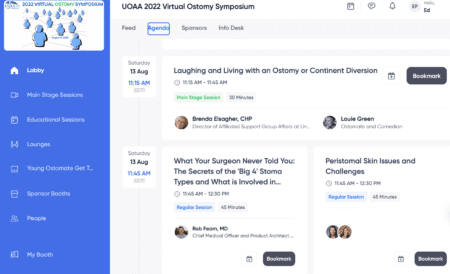
You can find the full list of speakers and the agenda here.
What to Expect
The virtual lobby will be open at 10:30 AM EDT before the speaker sessions begin to chat, troubleshoot any tech issues and explore the agenda. Ticket holders get an email with a unique link to the event. Attendees are encouraged to enter “lounges” organized by ostomy or continent diversion type (and one for caregivers) to chat or meet with others like you. These will be open for the entirety of the event for those who want to pop in and out during breaks.
Sponsor Booths will also be open throughout the event to give ticket holders the opportunity to talk with representatives of ostomy product manufacturers and suppliers – and learn about the latest product advancements. Thanks to all our symposium sponsors including Platinum Sponsor Convatec for helping to make this event possible.
The most important participant for this year’s UOAA Virtual Ostomy Symposium is you.
After opening remarks from UOAA leadership, the symposium will kick off on the Main Stage with Louie Green, a standup comic and recent ostomate. He’s going to share his poignant ostomy journey with a bit of welcoming wit.
Next on the Main Stage at 12:40 AM EDT, Joy Hooper’s Ostomy BUZZables presentation will present the newest innovations and ostomy products available on the market. If there’s something new in the ostomy world, you’ll hear about it here.
Educational Sessions
Throughout the day, Educational Sessions will run concurrently between the Main Stage where you’ll get to hear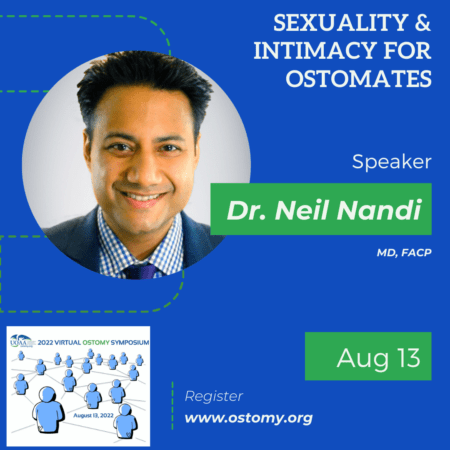 from wonderful WOC nurses, experienced ostomates, amazing doctors and dedicated advocates.
from wonderful WOC nurses, experienced ostomates, amazing doctors and dedicated advocates.
Presentations will cover everything from sex and intimacy and traveling the world with an ostomy to nutrition and staying hydrated and dealing with hernias. Other session topics will focus on peristomal skin issues, aging in place with an ostomy, affiliated support groups, and secrets of the big four stoma types.
There will also be a special workshop for young adults. Inspiring ostomates Molly Atwater-Pulisic and Collin Jarvis will be co-hosting the conversation about physical activity, relationships, and mental health for ostomates ages 18-35.
Attendees will be able to submit questions for the speakers during the presentations and the speakers presentation materials will be available to access at you leisure.
After these educational sessions be sure not to miss Dr. Janice Beitz back on the Main Stage at 3:55 PM EDT for a presentation titled If You See a Toilet in Your Dreams, do NOT use it! Emotional Support, Quality of Life and Humor. It will look at the power of humor in dealing with emotional challenges while dispelling some myths and misconceptions about ostomies.
 The event will come to a close with a special presentation from Magen Cherry, a j-poucher and winner of the 2007 Miss Texas USA competition. She uses her platform to share encouragement and bring hope to fellow ostomates and j-pouchers coming to terms with their new reality. Fun fact: Magen had a colonoscopy three days after being crowned Miss Texas USA!
The event will come to a close with a special presentation from Magen Cherry, a j-poucher and winner of the 2007 Miss Texas USA competition. She uses her platform to share encouragement and bring hope to fellow ostomates and j-pouchers coming to terms with their new reality. Fun fact: Magen had a colonoscopy three days after being crowned Miss Texas USA!
Connecting with a Caring Community
Of course, there are going to be plenty of great speakers but the most important participant for this year’s UOAA Virtual Symposium is you. By taking part in this event, you’ll be able to connect with a thriving ostomy community (or j-pouchers or any other type of continent diversion) and help us grow even stronger.
As we all know, living with an ostomy or other continent diversion isn’t always easy. It can be isolating. Sometimes even close friends and family don’t want to hear anything about it. There’s fear of the future and worry about existing relationships.
Many new ostomates want to hide it forever and hope no one ever finds out. But, through organizations like UOAA, they’ll find out they’re not alone and that life with an ostomy shouldn’t be something to be ashamed of, but rather that ostomies are life-savers and that you can join others in a celebration of being alive.
This year’s event is going to be awesome. Questions you were too afraid to ask will be answered. Questions you didn’t even know you had will be answered. You’ll get to connect with wonderful people while gaining inspiration and knowledge that could impact the rest of your life – and the lives of others.
As you can see this is not your typical webinar or Zoom call and the $35 ticket (plus $3.88 processing fee) and sponsor support of UOAA (a 501(c)(3) charity) help to offset the costs of hosting this special event.
All of this is leading to UOAA’s in-person National Conference in Houston in August of 2023. The connections you build during this year’s virtual event can open the door to even deeper friendships when we all get to meet each other face-to-face next year in Houston!
The UOAA 2022 Virtual Ostomy Symposium on Saturday, August 13th is going to be a great time and a great experience. And we need you there to make it even better.
To get all the information, learn more about the speakers, or find out how to get tickets, head to the event website.


 from wonderful WOC nurses, experienced ostomates, amazing doctors and dedicated advocates.
from wonderful WOC nurses, experienced ostomates, amazing doctors and dedicated advocates. The event will come to a close with a special presentation from Magen Cherry, a j-poucher and winner of the 2007 Miss Texas USA competition. She uses her platform to share encouragement and bring hope to fellow ostomates and j-pouchers coming to terms with their new reality. Fun fact: Magen had a colonoscopy three days after being crowned Miss Texas USA!
The event will come to a close with a special presentation from Magen Cherry, a j-poucher and winner of the 2007 Miss Texas USA competition. She uses her platform to share encouragement and bring hope to fellow ostomates and j-pouchers coming to terms with their new reality. Fun fact: Magen had a colonoscopy three days after being crowned Miss Texas USA!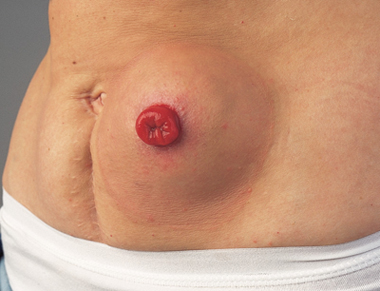 intestine and the weak spot is in the same area the surgeon created your stoma.
intestine and the weak spot is in the same area the surgeon created your stoma.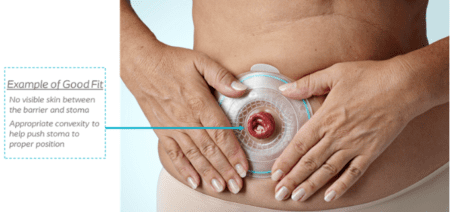
 Mackenzie Bauhs, CWOCN, is currently an employee and Ostomy Clinical Consultant for Coloplast. She obtained her bachelor’s degree at Carroll University in Wisconsin. She has worked with ostomy patients in the post-operative period at the University of Wisconsin Hospital and Clinics in Madison, Wisconsin as well as outpatient ostomy care at Rush University Medical Center in Chicago, Illinois.
Mackenzie Bauhs, CWOCN, is currently an employee and Ostomy Clinical Consultant for Coloplast. She obtained her bachelor’s degree at Carroll University in Wisconsin. She has worked with ostomy patients in the post-operative period at the University of Wisconsin Hospital and Clinics in Madison, Wisconsin as well as outpatient ostomy care at Rush University Medical Center in Chicago, Illinois.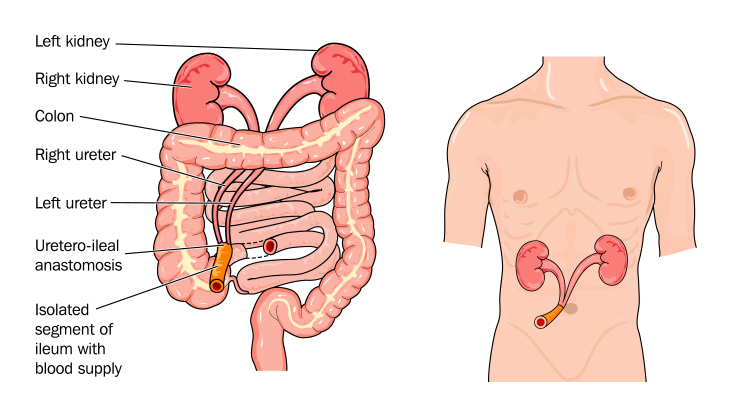 Why Do People Need A Urostomy?
Why Do People Need A Urostomy?